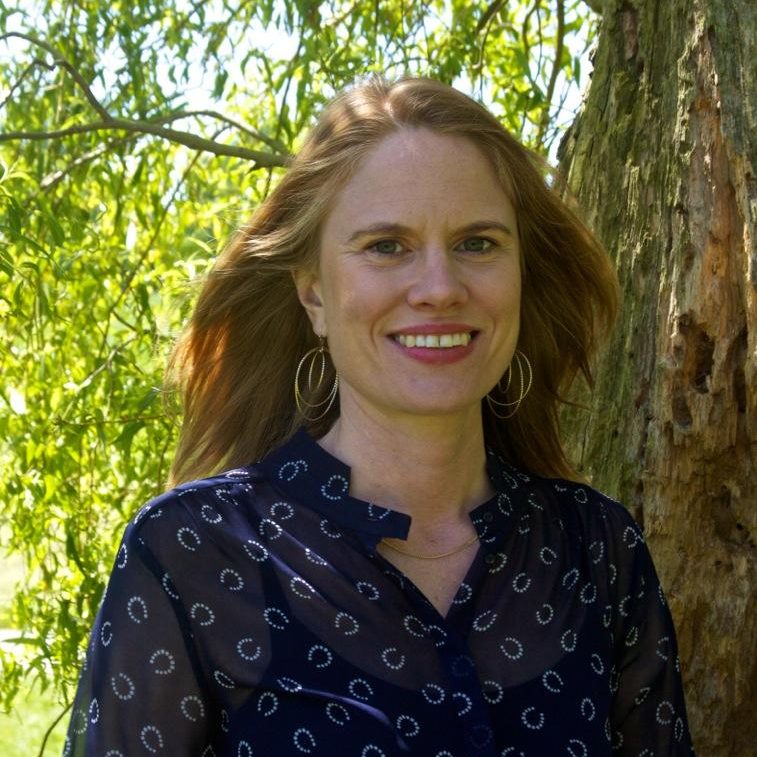by Claire de Boursac
Psychotherapist Claire de Boursac explains how aligning with the rhythms of nature can improve our wellbeing.
This feature first appeared in Kindred Spirit issue 162 (Jan/Feb 2019.)

Many aspects of modern life have distanced us from the natural cycles within and around us. Technological advances have reduced our need to adjust to the changing seasons and society often encourages, even demands that we be consistent throughout the year.
Yet, we are animal beings with our own rhythms and we are intimately connected to the natural world around us, including the seasons. Rediscovering our Seasonal Self can nourish our mind, body and spirit and nature can be our wise teacher on this journey.
In the UK we have four clear seasons, each with its own distinct character. Nature represents stillness and simplicity in winter, growing energy and productivity in the spring, blooming fullness during the summer months and a process of harvesting, releasing and slowing down in the autumn.
As we pause and consider this, many of us will recognise our own personal impulses and patterns reflecting in this cycle. Yet, with busy lives, established routines and a culture demanding consistency, we often fail to notice and to respond to these changes within us. This has consequences for our physical and mental wellbeing.
As a psychotherapist I often observe clients struggle around the changing of seasons as they override what their bodies and nature are telling them about the need to adapt. For example, I hear people being harshly self-critical during winter months as they no longer get to the early morning gym classes they loved in the summer and as they make 'less healthy' food choices, replacing salads with warm, heavier meals.
External Pressures
What is 'good for us' varies throughout the year. We have differing amounts of energy. Activities we are drawn to will vary. Our appetites and desires fluctuate. Our ancestors would have moved towards higher calorie foods in the winter, and our bodies have not evolved that much since then. However, we are often told that salad is healthy in a blanket way and it is on the shelves in our supermarket all year round. We then feel we ‘should’ want to eat it all year, that this would be the healthy choice.
Sometimes we give authority to trends and rules rather than our own, internal wisdom about what is right for us. We live in a world where electricity means we can stay at our desks just as late in the winter months as during the long days of the summer. With 24 hour indoor gyms there is no need to adjust our exercise patterns. Apparently shortly after inventing the light bulb, Eddison said that "there is barely reason for man to sleep now." Just because we can, doesn’t mean we should. Technology has evolved much faster than our biology and ignoring ourselves in favour of these external pressures is both unkind and unwise.
When I explore with my clients the changing seasons and invite them to examine what is actually happening in their own mind, body and spirit at this time, they name very real impulses and desires that were not alive in them a few months previous. In this knowing of themselves, they typically feel both relieved and empowered and can then more kindly respond to what it is they need in order to thrive this season.
Sadly, putting ourselves at the centre of the picture and being self-reflective is somewhat counter-cultural. We continue to receive messages of consistency and demands to operate at someone else's rhythm. Honouring our seasonal self is an ongoing process. Once we get to know our seasonal self, a quick check-in can be enough to get us back on track. I have found that for myself, and for those I work with, paying attention to the natural world around us can support an awareness of our changing needs.
Nature is constantly changing and adjusting to the surrounding conditions. It’s normal. It’s crucial to her health and survival. Nature normalizes change, including the shifting desires and impulses we experience as we journey through the cycle of the year.
Looking to nature at this time of year we may notice many of the trees have shed their leaves. This is a healthy process and vital to their health. The primary function of the leaves is to draw in the energy of the sun, through photosynthesis. Now that there is less sunshine available, the equation between the amount of energy used to maintain the leaf and the energy it captures shifts. Instead of a source of energy, the leaf became an energy drain on the tree and so it was released. In a tree we see this adjustment as wise, natural, unquestioned. We don’t hold it against the tree. Surely we can afford ourselves the same kind understanding?
When we bear mindful witness to these changes in nature, we are more able to notice and accept them within us. And what is truly wonderful is that nature is always available, free of charge. Even in a large, busy city like London you’d be hard-pushed to go about your day without seeing trees.
Deepen Your Connection
So, how can we all deepen our connection to the seasons and to our seasonal self?
☼ Get to know this moment in the cycle. Be in nature and meet this season with all of your senses- how does this moment in the year feel on your skin? What does it smell like? What can you see? What are the sounds of this season? Notice how this changes through the year.
☼ As you observe the natural world around you, pause and ponder if you recognise any of those patterns, qualities or behaviours stirring in you at this time. If you do, consider how you can honour them.
☼ Create a seasonal alter. Find a space in your home that you see on a daily basis (or add to an existing alter if you have one) and place objects relating to the current season there. Include things you’ve gathered in nature- such as a beautiful autumn leaf, a shiny conker; a card or poem that sings of the season or a memento of something you do or did at this time of year.
☼ Use your wardrobe as a reminder- When you put away your summer clothes and pull out your winter woollies, ask yourself if there are any habits/ activities you want to pack away with the shorts or re-start with the wearing of jumpers?
☼ Eat seasonally. If you can shop at a farmers’ market or farm shop, notice how the produce changes through the year and allow yourself to be drawn to what is calling you.
As you increase your awareness of the changes and deepen your knowing of your own impulses, try to respond to yourself as much as possible. It is true that for most modern folk, this may come with limits. Although companies increasingly support employee wellbeing and offer flexible working, your boss will likely not accommodate a request to work significantly less hours in the winter months to support your desire for semi-hibernation.
But, there are adjustments we can make around how we use our time and energy and small changes can have a big impact. Over recent years, books and articles on Hygge have provided inspiration for embracing and responding to that hibernation impulse. Perhaps most importantly, when we recognise that these changing desires and rhythms in us are natural, healthy even rational, we can quieten the critical voice which has been berating us with disapproval of being ‘lazy’ and hurling ‘shoulds’ at us.
There are seasonal patterns and trends. The majority of people have more energy in the summer months and want to be slower, more cosy in the darker days and colder weather. However, we are wonderfully individual and it’s important to respond to ourselves. In my Seasonal Self workshops, I have witnessed how delightfully different we are - how the long days of the summer are heavenly for some and overwhelming and anxiety-producing for others. Amongst us are those who are energised by the sunshine, as if they photosynthesise like the plants and there are those who feel enlivened by the cold air on their skin and come to life in the winter. Knowing who we are, how we are impacted and giving ourselves permission to feel all of this, and as much as possible to respond to ourselves, is an act of self-love, self-acceptance and has wonderful benefits for our wellbeing.
Enjoy and celebrate your seasonal self!
A winter meditation: Embracing stillness
Before starting, connect with the current season. Ideally, take a walk in nature or look at nature through your window. If that’s not possible, you can draw on a memory of time spent outside recently. Notice what the season smells like, looks like, sounds like and feels like. Really locate yourself here and now. Notice in particular, how nature is showing stillness and simplicity.
☼ Sit comfortably, where you won’t be disturbed.
☼ Light a candle and allow this to be the only light.
☼ Notice the gentle quality of the light. Allow the air surrounding you to take on this quality. Feel yourself surrounded by gentleness.
☼ Become aware of your physical body. Feel the solid support of the chair and ground beneath you.
☼ For a few moments, focus on your breath. With each exhale, invite your muscles to relax a little more, sink deeper into the chair. Effort less with each breath.
☼ Connect to a sense of stillness, however that comes to you (may be an image, a colour, a feeling). With each inhalation, draw the quality of stillness into your heart. On the out-breath, let it fill your body and being with its medicine.
☼ Continue until you feel fully nourished by stillness.
☼ In your inner or outer voice, repeat 3 times:
I am (your name)
I am here
That is enough
☼ Thank yourself for giving yourself this experience and blow out your candle.

About the author
Claire de Boursac is a Humanistic Psychotherapist and a nature-wellbeing practitioner. She runs Seasonal Self Workshops as well as individual, family and corporate Seasonal Self Sessions. She uses meditation, ritual and discussion to support people to connect with the rhythms within and around them and to discover what will help them thrive.
Natureasnurture.com




